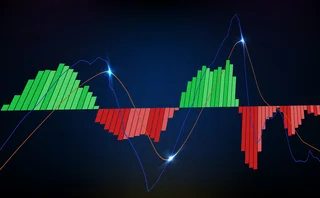
An exotic failure

Banks have long talked of the importance of building distribution channels for the risks amassed through their structured products businesses. Having accumulated bulky volatility, correlation and dividend exposures, dealers have boasted about honing their distribution capabilities.
Some have unveiled fancy new structured products, aimed at retail, private banks and institutional customers, specifically designed to offset dealer axes (in turn, providing cheap access to so-called hidden assets for investors). Others have built up hedge fund sales teams virtually from scratch, and are now big traders of variance swaps, conditional variance, correlation swaps and dividends.
These tactics, however, were found to be woefully lacking earlier this year. A sharp rise in correlation, spiking volatility and falling dividend expectations combined to create the perfect storm for exotic equity derivatives books. Dealers were left stunned by the extent of the dislocation, leaving most - if not all - with significant mark-to-market losses.
So, what went wrong? First, some of the distribution methods were not as efficient as some dealers had hoped. In particular, correlation swaps proved to be an imprecise hedge for products referenced to baskets of stocks, which typically leave the bank exposed to both correlation and volatility.
In addition, all retained large chunks of correlation, volatility and dividend exposures. It is not viable or even desirable to offset these positions entirely, and dealers were often happy to hold on to these (sometimes profitable) exposures. On top of that, some banks made heroic assumptions on volatility and correlation in their models. In particular, many were caught out by the rise in correlation between the Nikkei 225 index and the yen.
Pretty much all banks have been hit - although some of the newer entrants, unversed in managing shocks in correlation and volatility, have fared worse. Some have even pulled back from the exotics market.
Coming so soon on the back of multi-billion-dollar subprime writedowns, banks needed this like a bullet in the head. With structured products already under the microscope, there's always the possibility that fed-up board directors may decide to pull back from the more complex end of the derivatives market. The vast majority of banks say their exotics desks are still open for business. But, at the very least, dealers are likely to be reviewing the risks they want to hold, reassessing their assumptions and making their risk distribution capabilities more efficient.
- Nick Sawyer, Editor.
Only users who have a paid subscription or are part of a corporate subscription are able to print or copy content.
To access these options, along with all other subscription benefits, please contact info@risk.net or view our subscription options here: http://subscriptions.risk.net/subscribe
You are currently unable to print this content. Please contact info@risk.net to find out more.
You are currently unable to copy this content. Please contact info@risk.net to find out more.
Copyright Infopro Digital Limited. All rights reserved.
You may share this content using our article tools. Printing this content is for the sole use of the Authorised User (named subscriber), as outlined in our terms and conditions - https://www.infopro-insight.com/terms-conditions/insight-subscriptions/
If you would like to purchase additional rights please email info@risk.net
Copyright Infopro Digital Limited. All rights reserved.
You may share this content using our article tools. Copying this content is for the sole use of the Authorised User (named subscriber), as outlined in our terms and conditions - https://www.infopro-insight.com/terms-conditions/insight-subscriptions/
If you would like to purchase additional rights please email info@risk.net
More on Equity markets
The future of equity derivatives: perspectives for UK equities and dividends
Managing equity and dividend risk today requires new trading strategies and products. In a webinar convened by Risk.net and hosted by Eurex, three experts discuss what’s next for the UK and European markets.
Follow the moneyness
Barclays quants extend Bergomi’s skew stickiness ratio to all strikes
What gold's rise means for rates, equities
It has been several years since we have seen volatility in gold. An increase in gold volatility can typically be associated with a change in sentiment and investor behavior. The precious metal has surged this year on increased demand for safe haven…
Breaking the collateral silos – Navigating regulation with a strategic alternative
Emmanuel Denis, head of tri‑party services at BNP Paribas Securities Services, discusses why financial institutions must rethink old practices of collateral management and instead adopt a tri-party approach, with which equities can be managed as…
BAML and Morgan Stanley shift Indian P-notes to Europe
Tax changes trigger move out of Mauritius and Singapore
Volatility traders wrestle with digital risk of Brexit
Skew on major indexes leaps after market wakes up to risks of UK's referendum
New US tax rules could hamper ETN market, dealers warn
IRS’s forthcoming Section 871(m) rules could inadvertently capture legacy ETNs
Dealers fear death of dividend risk premia strategy
Shrinking dividend futures premium hurting investors
Most read
- Top 10 operational risks for 2024
- Japanese megabanks shun internal models as FRTB bites
- Top 10 op risks: third parties stoke cyber risk







